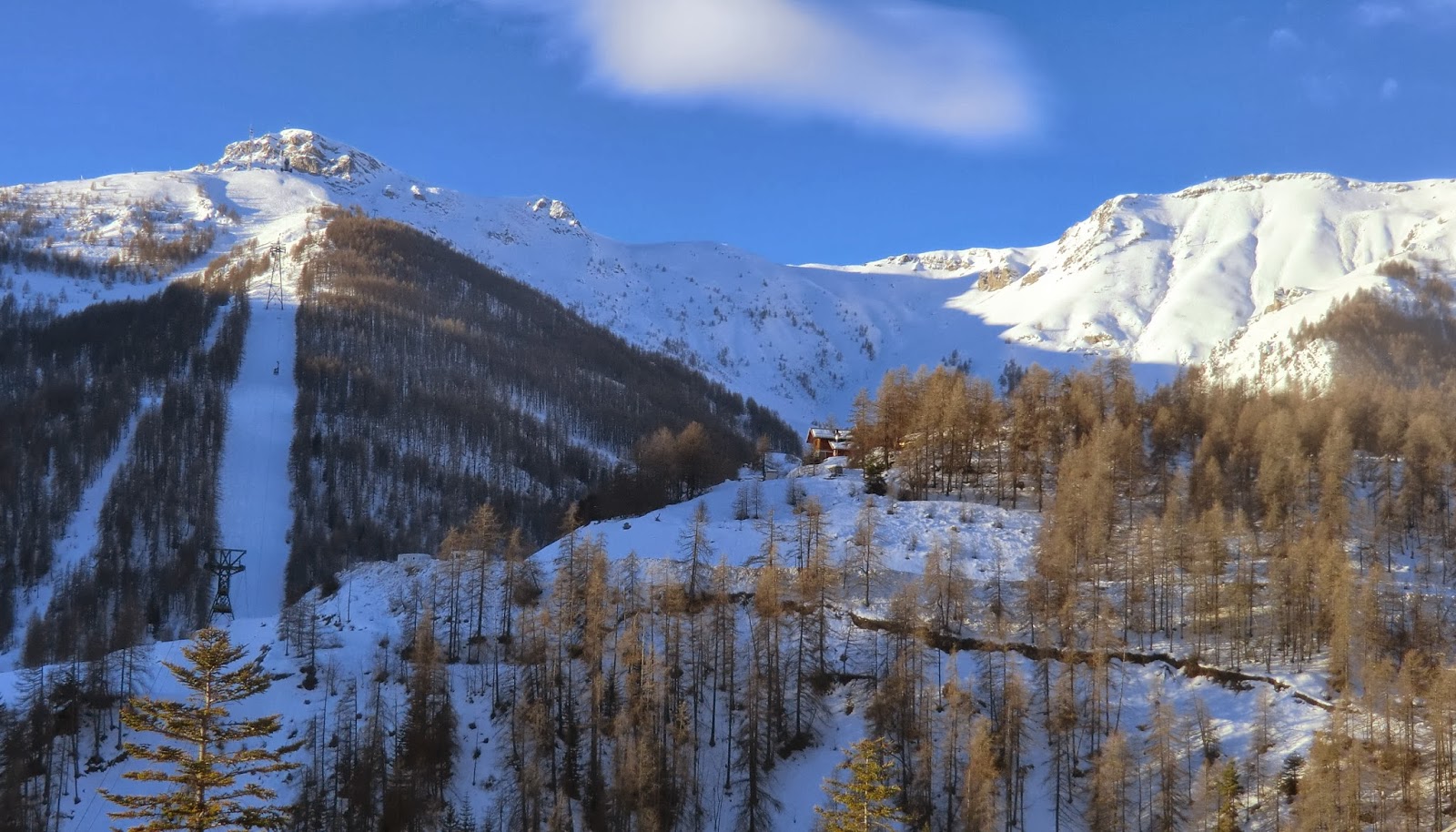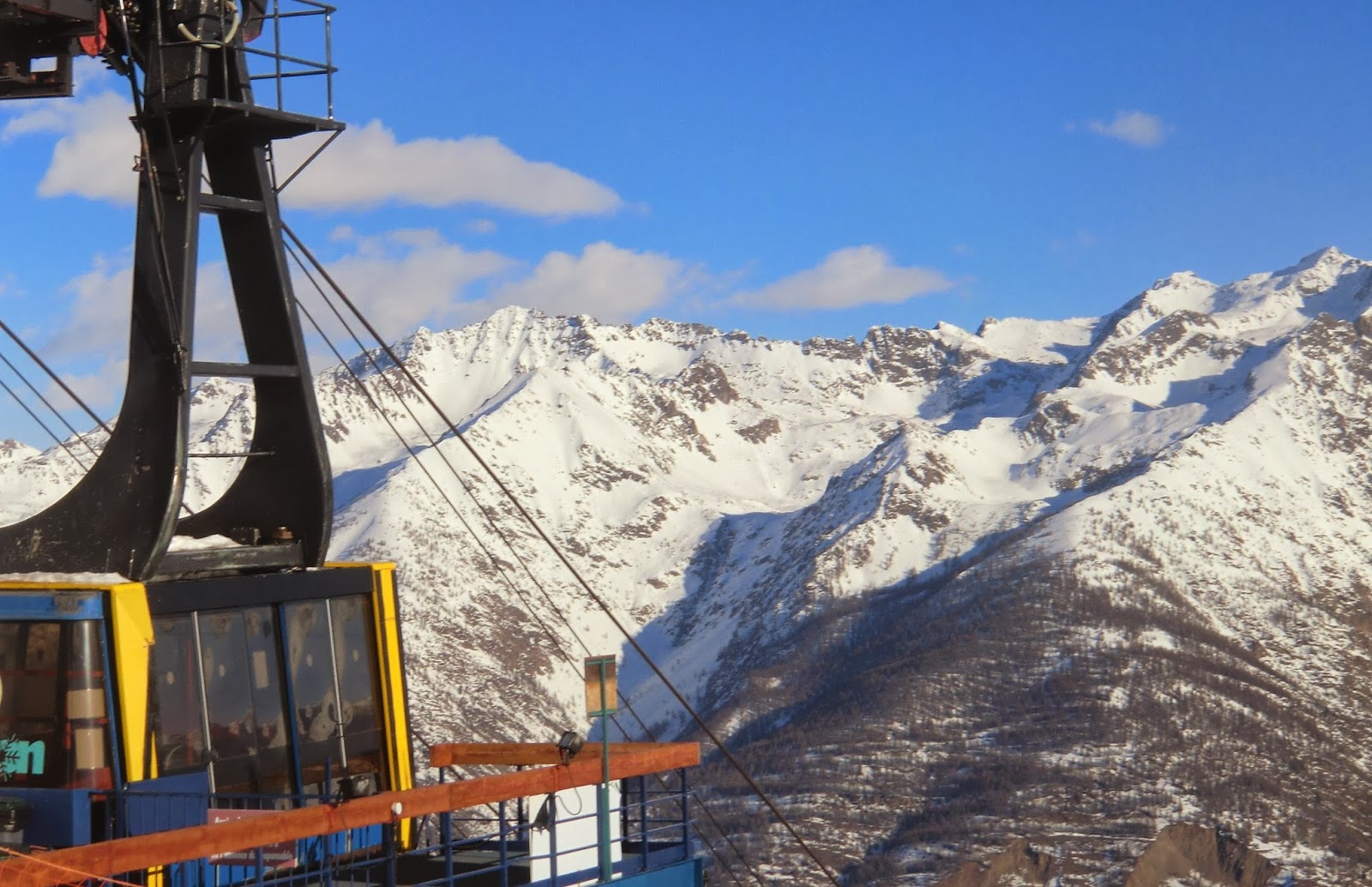
Driving up the Vésubie river valley, the change in landscape is abrupt. Immediately after the intersection at Plan du Var, in Gorges de la Vésubie the mountains rise several hundred meters straight up on both sides above the narrow valley .
On a plateau at about 1180 m north of the valley lies the Sanctuary called
La Madone d’Utelle. The sanctuary was constructed in 1806 at the location where an oratory was first built in 850 by Spanish sailors to thank La Madone for saving them from a shipwreck.
Nowadays
Madone d’Utelle is an important pilgrimage site. There is also a small hostel and restaurant which serves plat du jour, the dish of the day, when they are open. Their gift shop even sells
Pastis made by the Father. Their
web site in French has more information.
For hikers, several interesting possibilities exist. Below the Sanctuary, the
GR 5 trail goes through the village of Utelle (about 800 m). The paved road up to Utelle starts from the village of St-Jean-La-Rivière. From Utelle, the road continues further up to the sanctuary. We have previously hiked to the Sanctuary from a hamlet called la Villette. A more interesting variant might be the one described here:
Starting from Utelle along GR 5 southwest. The trail is excellent.
At signpost 6 you leave GR 5, ascend along a narrower and steeper path first to
Col d’Ambellarte (967 m) then follow yellow marks to Crête de la Madone.
The trail back to Utelle is well marked and kept as well. The whole circuit is about 8 km and the total vertical ascent very reasonable at 500 m.
We did this hike one Monday in early January so not surprisingly the restaurant was closed. A packet of nuts and dried fruit and some sports bars was a sufficient lunch which we enjoyed sitting outside in warm sunshine. We certainly recommend this tour that offers great views all the way.

Nice-Matin recently reported of crowds never seen before in Mercantour ski resorts during the weekend after Christmas. To make things worse, Téléphérique Las Donnas in Auron was out of order one afternoon.
Traffic and parking was chaotic as many had driven up there without
snow chains or winter tyres. As we all remember, the storm called Dirk
recently brought a lot of rain to the Riviera and snow to the
mountains. The landslide on the main road just north of St Sauveur sur
Tinée did not make things easier.
Avalanche risk still 3/5
After the holiday season, January is usually a low season in French ski resorts. Even attractive package deals are offered.
Lured by a favourable weather forecast, we booked a night in Auron for the 9th of January. Traffic was light. The landslide near St Sauveur sur Tinée had been dealt with; one line was open for traffic –no delays!
According to the
Auron web site, the snow depth at
high altitude was 120 cm with 41 open ski runs. The figures do not
tell the whole truth. Having previously skied in Auron several times,
the conditions this time were one of the best we have ever seen. The weather was exceptionally mild, it
was almost like spring skiing in January, but with proper snow! The runs were well prepared.
Even
Riounet, the long descent marked as red from
Cîme de Chavalet
(2453 m) down to the
Butières chair lift, was in an excellent
condition. This sector has not any snow making facilities and has even
been closed during bad winters some years ago.
Cîme de Chavalet (2453 m), the starting point for several long runs
The resort preparing for the day. The Teleriou cable car station is visible in the lower right corner. It's just the transport between the village and the Las Donnas cable car station and the lower lifts
Las Donnas (1640-2256 m) cable car upper station.
So if you are considering skiing in Alpes Maritimes, this year seems
to be really good so far. We will certainly go back.

After the festivities many wish to lighten and simplify their eating and maybe lose a little weight. Minestrone, the Mediterranean vegetable soup, is perfect for this purpose.
There are many variations of minestrone, but they all rely on a mixture of fresh seasonal vegetables. The word minestrone describes a thick soup in general. In Italy, pancetta, Italian bacon is often added, but the meat is just as often left out. In Italy, pesto is stirred in the cooked soup whereas in Nice they add pistou. Pistou is made of crushed basil, olive oil, garlic and salt. Good pistou from Provence is sold in Nice supermarkets, the greener it is the better the taste. The richness in the soup comes from a dollop of olive oil and freshly grated parmesan which are added just before the soup is served.
In winter, in Nice supermarkets they sell packages of Italian minestrone vegetables. There are chopped cabbage, borlotti beans (I usually pick these out because they won`t be fully cooked in an hour as the other vegetables), leek, celery, lentils, Swiss chard. Most minestrone recipes include pasta or rice. I leave them out because I like to serve my minestrone with good whole wheat bread.
Any leftover soup can be frozen.
4 servings
500 g package of minestrone vegetables
1 tbsp rapeseed oil
2 shallots, chopped
2 cloves garlic, minced
400 g tin chopped tomatoes
400 g tin white beans, rinsed
700 ml vegetable stock made from 1 cube organic vegetable stock and 700 ml water
3 tsp pistou from Provence
4 tbsp olive oil
Freshly grated parmesan cheese
Warm the rapeseed oil in a heavy casserole and soften the shallots and garlic for about 10 minutes.
Add the minestrone vegetables, water, vegetable cube and tinned tomatoes and bring to a boil. Reduce the temperature and let simmer partly covered for an hour. Stir now and again.
Rinse the white beans, add to the soup and let simmer for a while so that they are heated.
When the soup is cooked, stir in the pistou.
Divide the soup in bowls. Add the parmesan and olive oil just before serving. Serve with good whole wheat bread.

































